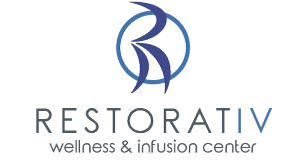About half a million people in the U.S. suffer from Season Affective Disorder (SAD), with women making up three-fourths of the affected population. SAD is type of depression that occurs mostly during fall and winter months, with less frequency in the spring and summer months. Due to the summer months being warmer and having longer days of daylight, SAD occur less often in places with warmer climates. Those who live further from the equator are more affected by SAD. Seasonal Affective Disorder treatments often include using medication or light therapy.
Causes
It is unknown the exact cause of SAD, but evidence suggests that it could be due to the lack of sunlight for some patients. When someone has less exposure to natural sunlight, it can change the internal biological clock that regulates sleep patterns and hormones. Another theory is that, those who suffer from SAD have a different chemical makeup in their brain—but that chemical makeup can be changed with some light exposure.
Symptoms
SAD symptoms are similar to what you may experience with major depression symptoms. This may include:
- Sad, depressed moods
- Feelings of hopelessness
- Difficulty focusing
- Lack of energy
- Changes in sleep
- Changes in eating
- Loss of pleasure in activities you use to love
- Thoughts of death and suicide
Those who suffer from SAD in the winter may also suffer from heaviness in the arms and legs, cravings for high-carb foods, and/or relationship issues.
Treatments
SAD usually fades away when the warmer months come, bringing with them some sunshine. However, there are a lot of different types of Season Affective Disorder treatments that can help you feel better faster, with some treatments that may even prevent SAD from returning again.
Some options are:
Light therapy boxes. Phototherapy is a type of light therapy that exposes the skin to ultraviolet light. Patients sit in front of a specialized light that gives out 10,000 lux of florescent light for 30-minutes/day. This light forces the brain to produce more serotonin, which is a hormone that affects the mood. Most people find it best to use light therapy when they first wake up in the morning.Dawn simulators. These devices are alarm clocks, but instead of emitting a loud sound, they give off light like a sunrise each day—the light gradually increases in intensity until the person awakes. The most highly recommended dawn simulators emit full-spectrum light, which simulates natural sunlight.Antidepressants. A very popular way to treat SAD, doctors may prescribe antidepressants before symptoms occur each year, and continue treatment after symptoms subside. Some patients need to try different types of antidepressants to see which works best, and it can take a few weeks for the symptoms of SAD to begin dissipating. Talk to your doctor about the best antidepressant for you.Talk therapy. Getting help from a professional therapist can help relieve some of the symptoms. A therapist may use cognitive behavioral therapy (CBT) techniques to help patients manage the feelings of hopelessness, and quiet their negative self-talk. Talk therapy can also help patients re-engage in pleasurable activities while struggling with the winter blues.Getting sunshine. Just going outside and getting some Vitamin D has been shown to help with SAD. Increasing exposure to the sun is as easy as taking a daily walk, or having a cup of coffee on the patio. If you can, take a quick vacation to a warmer climate!Exercise and sleep. Having a routine that includes adequate amounts of sleep and a healthy workout regimen has shown to help alleviate depression, whether seasonal or chronic. During those cold months, it will help to get some endorphins going to battle the symptoms of SAD.Ketamine infusions. Ketamine infusions have been known to alleviate depression and anxiety symptoms as soon as 1-2 infusions. They can offer fast relief from the fog of the winter blues—much faster than other types of treatment. Ketamine is an option once other treatment options have failed. Ask us if you’re a candidate for ketamine infusion therapy today!
Looking for avoid or escape the winter blues? Contact our southern New Jersey and greater Philadelphia area ketamine treatment center today. We offer a free consultation to all new patients, to help assess your symptoms and needs and determine whether you are a candidate for ketamine infusions. Complete the brief form below and a member of our experienced clinical team will be in touch shortly!


Recent Comments